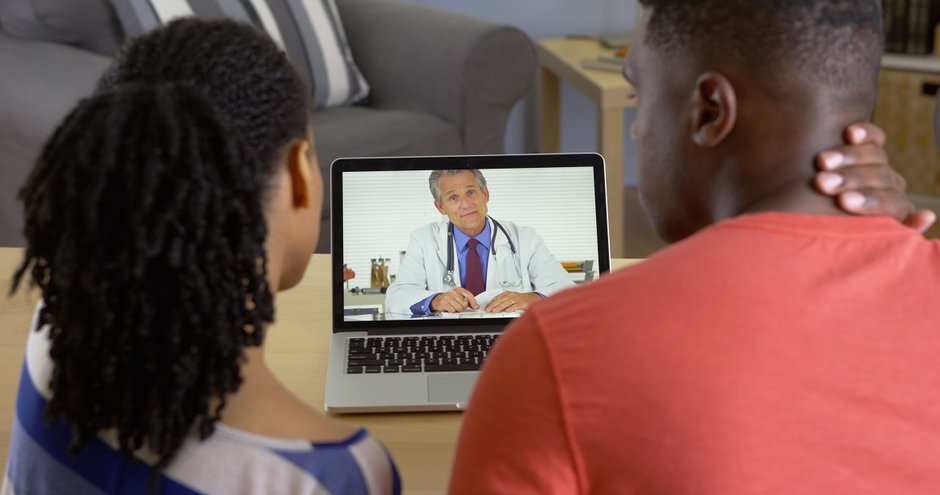This article originally appeared on Black Health Matters.

Credit: Shutterstock
Social distancing recommendations have forced us to change the way health care is being delivered. Virtual health care visits allow providers to see patients when coming into the clinic isn’t an option. They help us minimize disease spread, eliminate unnecessary hospital visits and free up resources so people in critical need can be better served.
Virtual health care isn’t new. Telemedicine appointments have been used for years by physicians for post-operative and follow-up appointments, but many of us haven’t taken part in video-based visits. So it stands to reason that some of us might be nervous the first time we have a telehealth visit, especially if technology isn’t your thing. Like an in-person visit, here’s what you can do to have a successful virtual health care visit:
- Know how to connect with your provider. Will you need to download software? Is there a link you’ll need to follow to connect with your doctor? Discuss this with your doctor before the actual appointment so you can work out glitches.
- Make sure your technology works. In the last couple of months, many of us have part of virtual meetings where a participant’s camera or audio didn’t work. Before your virtual doctor appointment, check that your internet connection is strong and that the camera and volume on your device are on and working.
- Charge your device. Double check the battery in whatever device—cell phone, computer or tablet—before your appointment. You don’t want to lose your doctor mid-visit.
- Prepare the same way you would for an in-person visit. Be just as prepared as when you see your doctor in the office. Keep the list of medications you take handy, and have your questions ready. Be prepared to answer questions about any symptoms you may be experiencing.
- Use a private space. You’ll discuss your health, so you should be in an area that’s private enough that others can’t overhear your information. Your physician may take a thorough medical history and ask you sensitive questions. Set up your device so you are visible on the screen; your doctor may need to see your whole body, not just your face. Make sure the lighting is good.
- Help your doctor check your vitals. If you have a thermometer or wearable technology that measures your heart rate, have it available.
- Expect a possible physical exam. Your doctor might ask you to open your mouth and shine a light on the back of your throat. She might ask you to press your abdomen and let her know if that hurts. If you have a rash, show it to your provider. He might observe your breathing pattern to see if you are in respiratory distress or check your ankles for swelling.
- Treat the video visit like any other appointment. Be on time. Be prepared. Many conditions can be treated through virtual health care. Of course, some physical procedures, like setting a broken bone, can’t be done virtually. And technology can be unpredictable at times. But telemedicine is just medicine being delivered on a different platform.
The opinions expressed in this article are those of the author and do not necessarily reflect those of the Diverse Elders Coalition.
